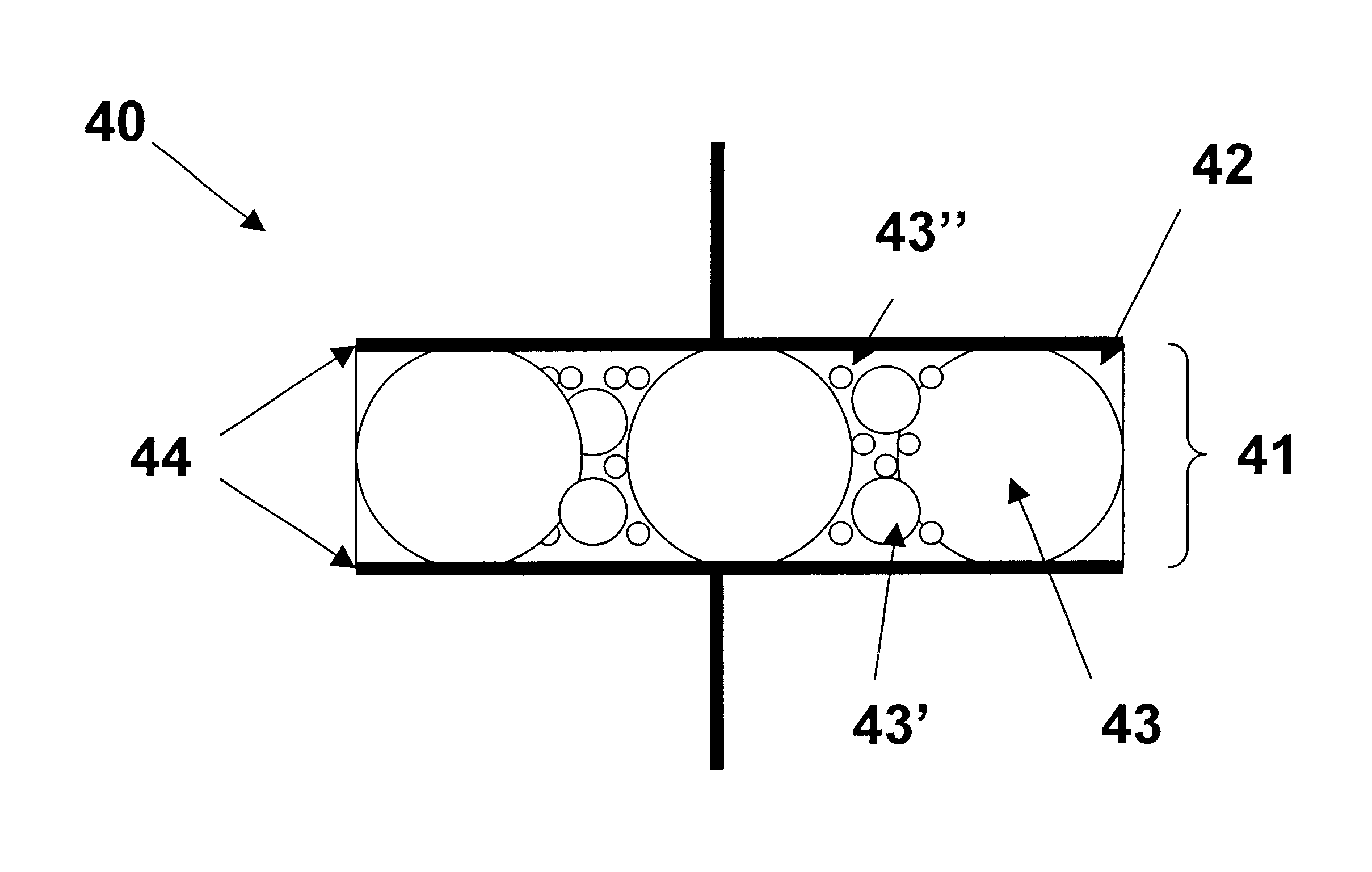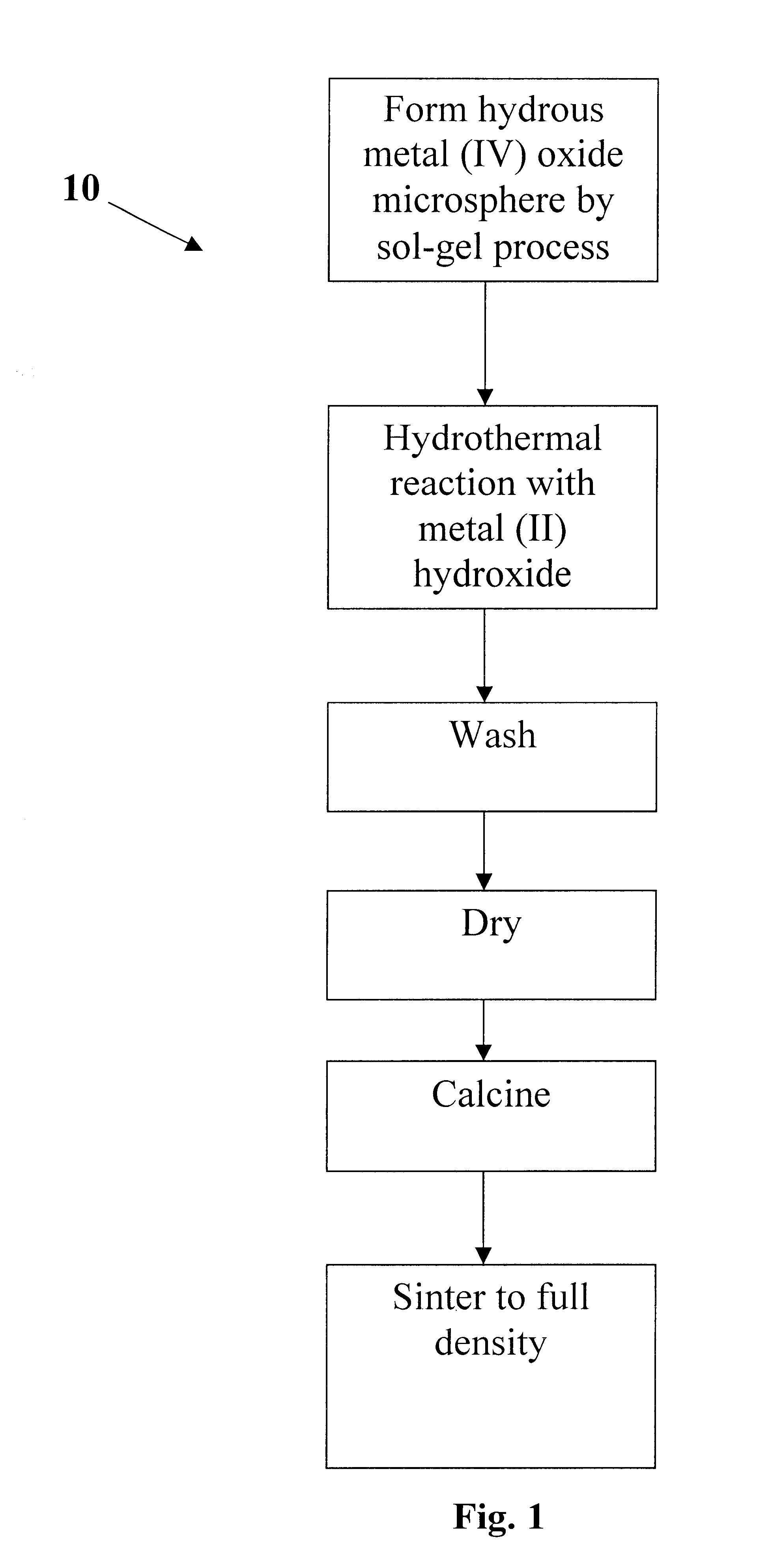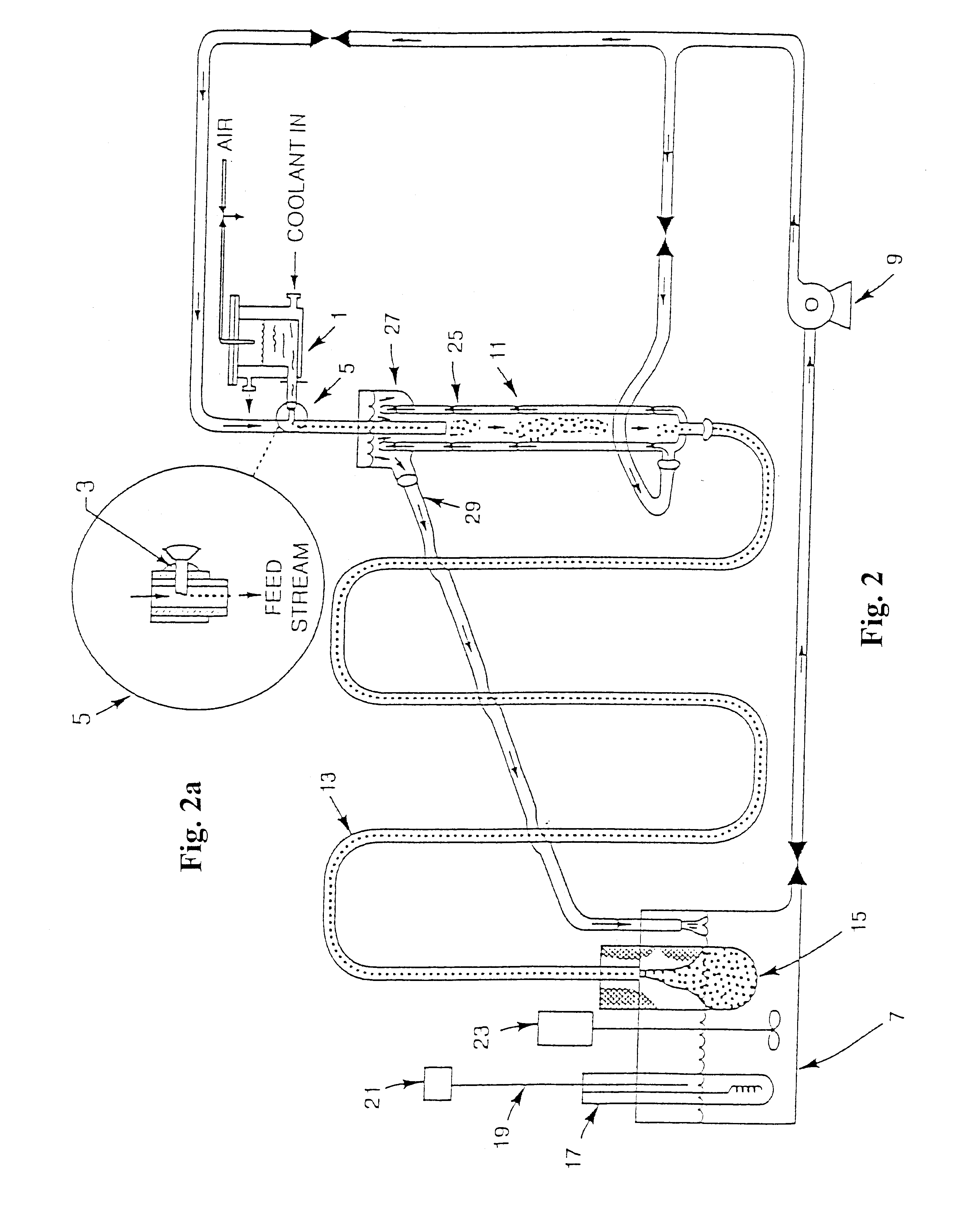Dielectric composite materials and method for preparing
a composite material and dielectric technology, applied in the field of dielectric composite materials and preparation methods, can solve the problems of limited incorporation of dielectric powder, such as barium titanate, into polymer binders
- Summary
- Abstract
- Description
- Claims
- Application Information
AI Technical Summary
Benefits of technology
Problems solved by technology
Method used
Image
Examples
example 2
The hydrous titanium oxide gel beads from the previous Example were about 500 .mu.m. These beads were suspended in a stainless steel mesh basket and placed into a Parr reactor in a solution of 0.1 M Ba(OH).sub.2 after overnight equilibration. Additional solution was used that included Ba(NO.sub.3).sub.2 so that there was about 27 g of excess Ba(NO.sub.3).sub.2, corresponding to a 3:1 ratio of Ba:Ti by weight. The reactor was heated to 150.degree. C. while maintaining sufficient pressure to prevent boiling of the solution and the sample was held for 6 hours. Upon removal, the beads were intact and had changed color (white to tan). The beads were dried and fired in air by heating at 10.degree. C. / min to 1200.degree. C. and held for 1 min at 1200.degree. C. The beads, some of which were cracked and some of which were still intact, were then crushed and examined by X-ray diffraction, which determined that they were substantially single-phase BaTi.sub.4 O.sub.9.
example 3
A second conversion experiment was done using conditions similar to those in Example 2. Again, excess barium nitrate was added to achieve a Ba:Ti ratio of 3:1. Conversion was carried out for 8.5 h at 150.degree. C. Upon removal, the beads were intact and had changed color (to medium brown). The beads were dried and fired in air by heating at 10.degree. C. / min to 1200.degree. C. and held for 1 min at 1200.degree. C. The beads, about 80% of that were intact, were about 100 to 150 .mu.m in diameter.
example 4
Another conversion experiment was done using conditions similar to those in Example 3, except that the gel beads were suspended in a Pyrex container. In this case, excess barium nitrate was added to achieve a Ba:Ti ratio of 4: 1. Conversion was carried out for 9 h at 215.degree. C. Upon removal, the beads were intact and had changed color (to medium brown). The beads were dried and fired in air by heating at 10.degree. C. / min to 1200.degree. C. and held for 1 min at 1200.degree. C. The beads, about 70% of that were intact, were about 100 to 150 .mu.m in diameter. Some beads were then crushed and examined by X-ray diffraction, which determined that they were substantially single-phase BaTi.sub.5 O.sub.11.
PUM
| Property | Measurement | Unit |
|---|---|---|
| diameters | aaaaa | aaaaa |
| diameter | aaaaa | aaaaa |
| residence time | aaaaa | aaaaa |
Abstract
Description
Claims
Application Information
 Login to View More
Login to View More - R&D
- Intellectual Property
- Life Sciences
- Materials
- Tech Scout
- Unparalleled Data Quality
- Higher Quality Content
- 60% Fewer Hallucinations
Browse by: Latest US Patents, China's latest patents, Technical Efficacy Thesaurus, Application Domain, Technology Topic, Popular Technical Reports.
© 2025 PatSnap. All rights reserved.Legal|Privacy policy|Modern Slavery Act Transparency Statement|Sitemap|About US| Contact US: help@patsnap.com



